|
Angles
Many materials have characteristic angles. Calcite, whewellite, florite,
amphibols, and halite are a few examples. This is not to be
confused with angularity, the measure of abrasive errosion of a mineral
particle.
. . . Calcite
Calcite has three cleavage planes and one parting plane. As a result,
fragments of calcite typically exhibite just a few characteristic
angles.
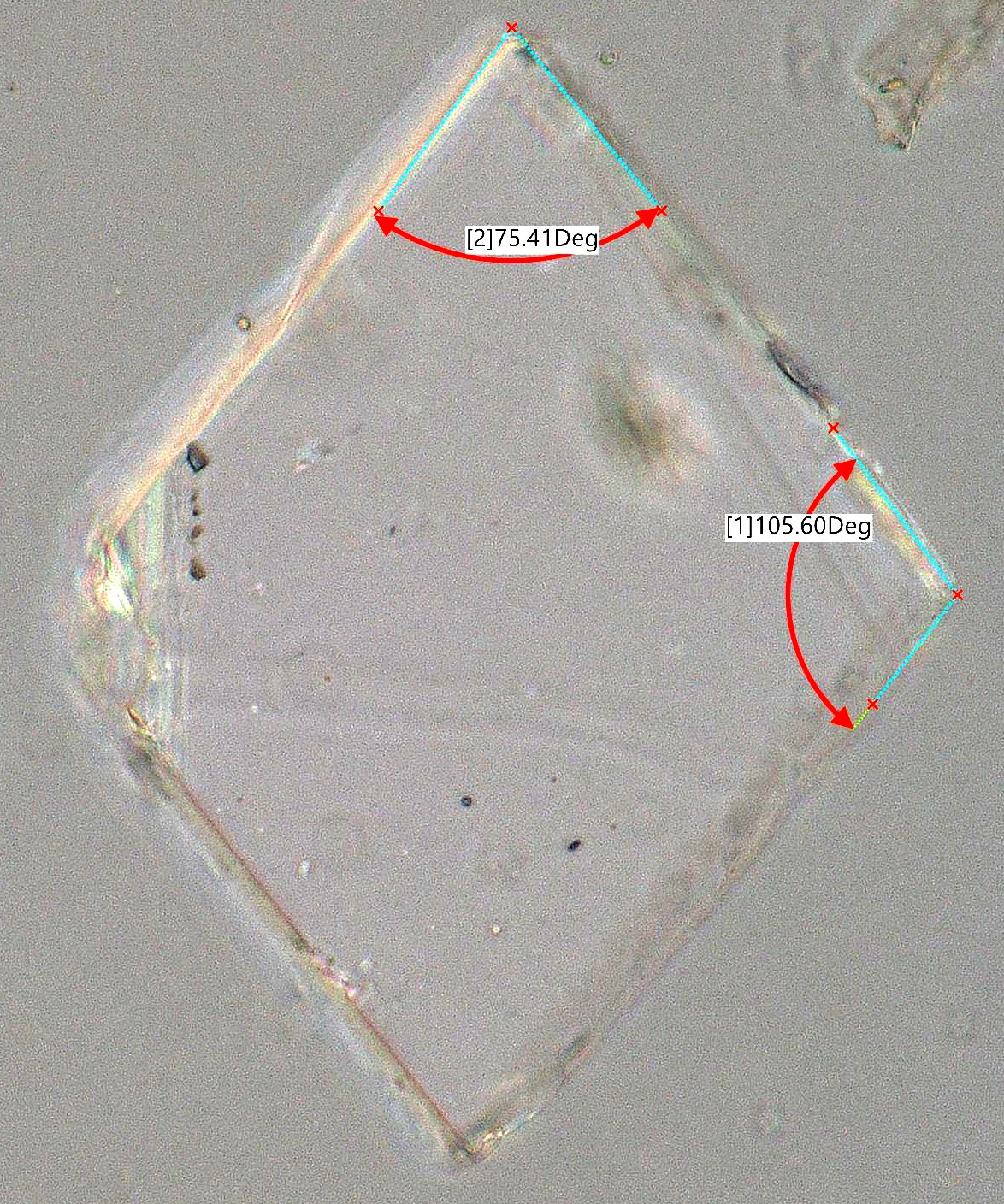
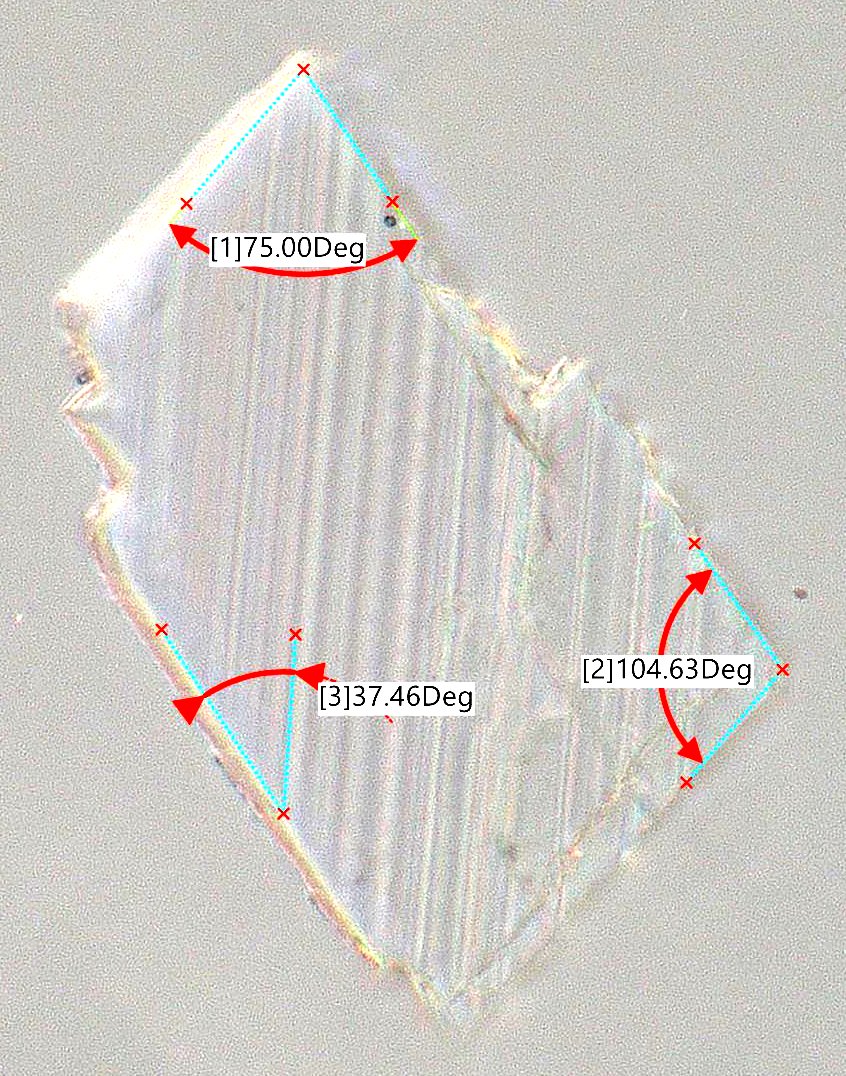
. . . Whewellite (Calcium Oxalate Monohydrate)
Whewellite is one of three forms of hydrated calcium oxalate. The forms of
the crystals are the result of growth patterns rather
than cleave. These forms in plant phytoliths are affected by the plant
genetics and cell structure. There are a variety of complex
forms as a result. The forms seen in the leaves and the bark of the same
plant are often different. Tabular forms are easily
identified by their uniform interference color over the whole body of the
crystal. These tend to show characteristic angles of about
70 and 110 degrees. They are often diamonds or bipyramidal prisms. Other
forms of single crystals or twins are just as characteristic.
The multiple interference color they exibit demonstrate their three
dimensional form. The angles are not as regular in the mount
because they don't rest on as uniform a base.

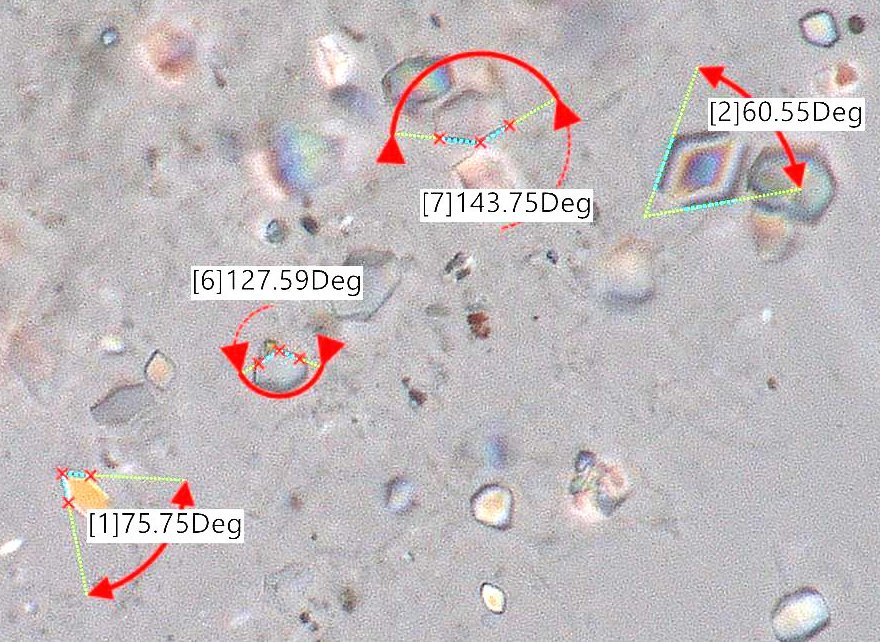
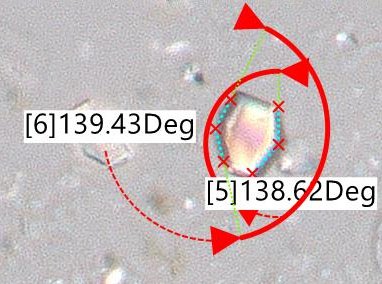
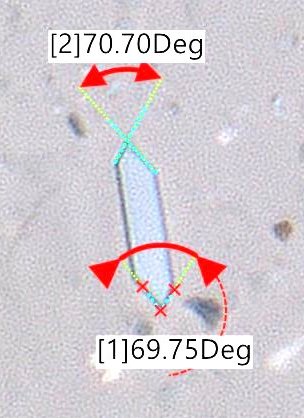
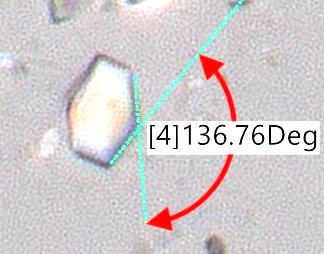
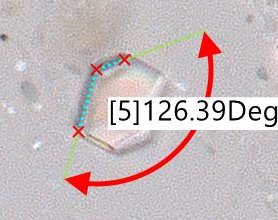
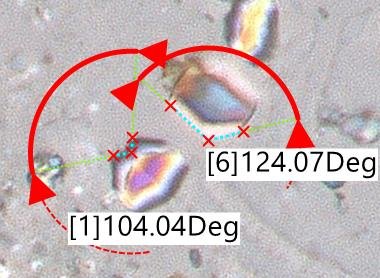

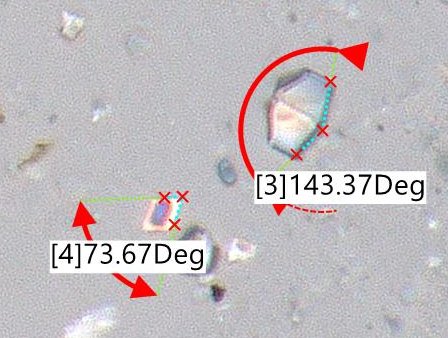
. . . Calcite
|